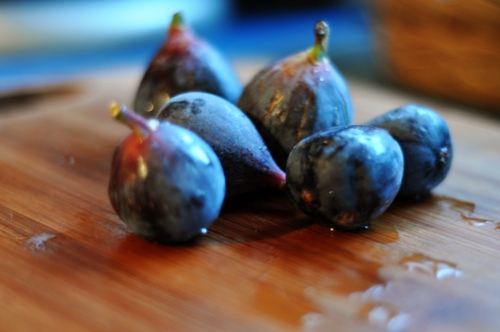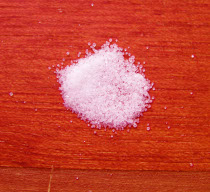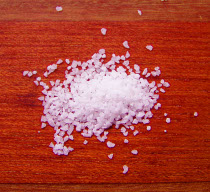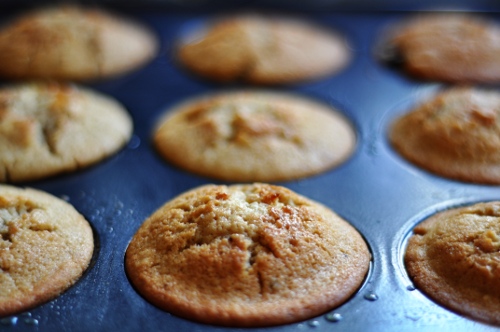
I think we have talked about the way I pine for lazy weekend mornings to while away with plates of fresh muffins.
A recent foray into vegan, gluten-free cooking (long story) left me with a sizeable quantity of almond milk and gluten-free all-purpose flour (“GF AP”). I didn’t have specific designs on them at first, but figured the inventive mood would strike at some point. One morning, it did.
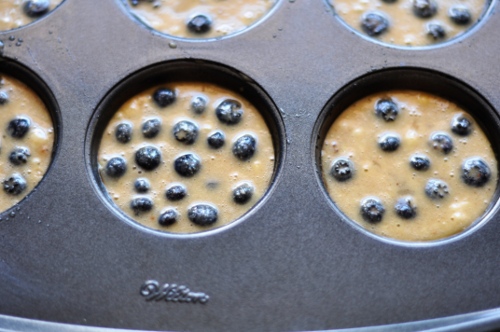
And here is where I confess something slightly embarrassing. I make biscuits with Bisquick. I know, I know. It’s rather antithetical to all of my feelings about baking. I’m wrapping myself in a little shower curtain of shame in order to explain this, but it’s relevant to the how and why I decided to try using almond milk in muffins, so stick with me. After months of enjoying the splendor of traditional baking powder biscuits made with butter, John and I decided to get back on Weight Watchers (a wagon from which we have long since fallen). After recommitting to the double-W, we couldn’t justify the eleventy vermillion points in a serving of those biscuits (vermillion is a number with so many zeroes it turns red). One day, I discovered that Bisquick’s Heart Healthy baking mix made decent, though not equivalent, biscuits. What can I say, they are incredibly fast and relatively low in calories and fat.
Have I lost all baking credibility with you? I hope not. Remember the marshmallows? The bread? The olive oil cake? Surely you can cut me a smidgen of slack for this one thing. Oh, and if John tries to tell you about a bag of frozen potstickers that allegedly appears in our freezer on occasion, HE IS LYING.
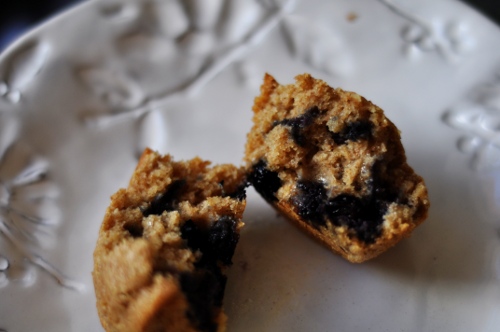
So. As I was saying, I had gobs of almond milk and GF AP and no plans for either. On a whim, I decided to see what would happen if I used almond milk in place of regular milk in my Bisquick biscuits. My reaction, upon opening the oven, summoned from my core an authentic, Utahn OH MY HECK that would have made Norm Bangerter proud. They were HUGE and had the most amazing texture – pillowy soft with the tiniest crumb.
Since the basic muffin recipe is quick and quite malleable when it comes to ingredient manipulation, I decided to take the almond milk for another spin and see what it could do. When combined with GF AP, the result is scrumptious and workable for the gluten-free and dairy-free crowds (so long as your dairy-free parameters concern Things That Come From a Cow; the recipe includes eggs).
Food allergy/intolerance struggles are near and dear to my little peanut-allergic heart. I’m pleased to offer this recipe for my gluten-free and dairy-free friends who yearn for baked things that don’t suffer in texture or taste. All too often, recipe adaptations for food allergies/intolerances are woeful approximations of the real thing. In tasting these muffins (and sharing them with my lovely, gluten-free neighbor), I was really heartened to see that they taste and feel like…muffins. They aren’t a weak knock-off, they’re just good. Give them a shot, whether or not you happen to have a hard time with gluten or milk proteins. You’ll have something wonderful to share with those who do.
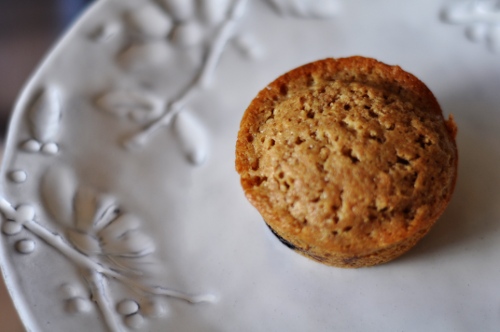
The blueberries get a subtle but beautiful boost from the maple syrup (again, thank you Flavor Bible). If you want your berries to be further and fewer between, skip folding them into the batter and sink them, individually, with your fingers once you’ve portioned the batter into the wells.
Note that this recipe also works with spelt flour, if you happen to have some around. If you go with spelt flour, I recommend a food scale so you can measure out 8 oz – it’s a little more dense than GF AP, and you’ll want slightly less than the 1 ¾ cups called for here. Spelt, for the uninitiated, is not gluten-free; if you swap it in place of the GF AP flour, you can’t feed these to your Celiac friends. If gluten isn’t an issue, I highly recommend playing around with spelt flour – it’s high in protein and has a lovely nutty, sweet flavor.
(Keep reading Gluten-Free Blueberry Muffins…)
